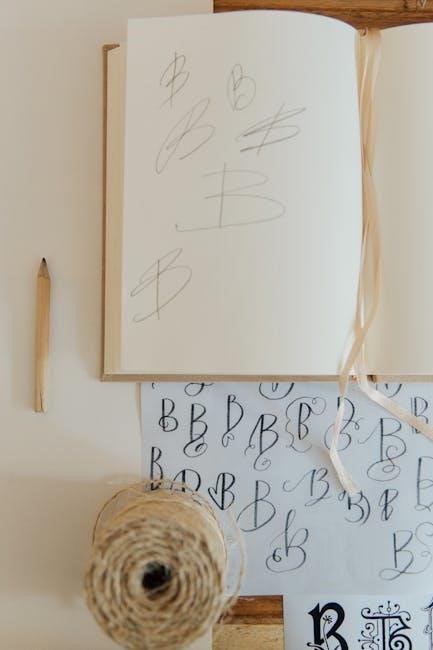‘s’ or ‘es’ Worksheet PDF: A Comprehensive Guide

‘s’ or ‘es’ worksheets in PDF format offer a structured approach to mastering plural noun formation and third-person singular verb conjugation. These worksheets provide targeted exercises for students learning English grammar. They reinforce rules through fill-in-the-blank questions‚ error correction‚ and sentence matching. These exercises are designed to improve understanding.
Plural nouns represent more than one of a particular noun. Mastering their formation is a fundamental step in English language acquisition. Typically‚ pluralization involves adding an ‘s’ to the end of a singular noun‚ transforming “apple” into “apples” or “tree” into “trees.” However‚ English grammar presents exceptions and specific rules necessitating the addition of ‘es’ or the alteration of the noun’s ending.
Nouns ending in x‚ z‚ s‚ sh‚ and ch‚ for instance‚ require an ‘es’ to form their plural‚ such as “box” becoming “boxes” or “dish” becoming “dishes.” These rules prevent pronunciation difficulties and maintain clarity. Furthermore‚ some nouns ending in ‘y’ require changing the ‘y’ to ‘i’ and adding ‘es‚’ like “baby” transforming into “babies.”
Understanding these rules is crucial for accurate writing and speaking. Worksheets focusing on ‘s’ or ‘es’ are invaluable tools for students to practice and internalize these concepts. They offer varied exercises‚ reinforcing the correct application of pluralization rules and helping students avoid common errors. Through consistent practice‚ learners can confidently navigate the intricacies of plural noun formation.
Basic Rule: Adding ‘s’
The most straightforward method for forming plural nouns in English involves the addition of ‘s’ to the end of the singular noun. This rule applies to a vast majority of nouns and serves as the foundation for understanding pluralization. Examples include transforming “flower” into “flowers‚” “tool” into “tools‚” “chair” into “chairs‚” and “pencil” into “pencils.” This basic rule is easy to grasp‚ making it the first concept introduced to language learners.
However‚ recognizing when to apply this simple rule is just as important as understanding the rule itself. Nouns that don’t end in specific letters like x‚ z‚ s‚ sh‚ or ch typically follow this rule. Identifying these exceptions is crucial for avoiding errors and ensuring correct plural formation.
Worksheets often begin with exercises focusing solely on adding ‘s’ to solidify this fundamental concept. These exercises might involve providing a list of singular nouns and asking students to write their plural forms‚ reinforcing their understanding and building confidence before moving on to more complex rules. Mastering this basic rule provides a solid base upon which to build further knowledge of English pluralization.
Rule for ‘es’: Nouns Ending in x‚ z‚ s‚ sh‚ ch
Nouns ending in specific letters require a different approach to form their plurals. If a singular noun ends in x‚ z‚ s‚ sh‚ or ch‚ you typically add ‘es’ instead of just ‘s’. This rule helps maintain pronunciation and avoids awkward sounds. Examples include turning “box” into “boxes‚” “flash” into “flashes‚” “church” into “churches‚” and “dish” into “dishes.” Recognizing these endings is key to applying this rule correctly.
These specific endings often create a hissing sound when adding only an ‘s’‚ so ‘es’ provides a clearer pronunciation. Worksheets dedicated to this rule will include exercises where students practice identifying nouns with these endings and then correctly forming their plurals.
These exercises may involve providing a mix of nouns‚ some requiring only ‘s’ and others requiring ‘es’‚ challenging students to differentiate between the two rules. Mastering this rule is essential for accurate pluralization and contributes significantly to a student’s overall grammatical competence. Consistent practice with targeted worksheets will solidify understanding and improve fluency.

Verbs and ‘es’: He/She/It Forms
In the present simple tense‚ verbs change form when used with the third-person singular pronouns: he‚ she‚ and it. Most verbs simply add an ‘s’ to the base form. However‚ verbs ending in certain letters require adding ‘es’. This rule primarily applies to verbs ending in -ch‚ -sh‚ -ss‚ -x‚ and sometimes -o. For example‚ “watch” becomes “watches‚” “wash” becomes “washes‚” “miss” becomes “misses‚” and “fix” becomes “fixes.”
Understanding this rule is crucial for constructing grammatically correct sentences in the present simple tense. Worksheets focusing on this concept often present sentences with he‚ she‚ or it as the subject‚ requiring students to correctly conjugate the verb by adding either ‘s’ or ‘es’.
These exercises may include identifying the correct verb form from a multiple-choice selection or filling in the blank with the appropriate conjugated verb. Mastery of this rule ensures accurate verb usage and is vital for clear and effective communication in English. Consistent practice helps students internalize these patterns and apply them confidently.

‘ies’ Rule: Changing ‘y’ to ‘i’ and Adding ‘es’
A specific rule applies when forming the plural of nouns ending in ‘y’ preceded by a consonant. In these cases‚ the ‘y’ is changed to ‘i’ before adding ‘es’. For example‚ the singular noun “baby” becomes “babies” in its plural form. Similarly‚ “story” transforms into “stories.” This rule distinguishes itself from nouns ending in ‘y’ preceded by a vowel‚ where only an ‘s’ is added‚ such as “boy” becoming “boys.”
Worksheets targeting this rule typically include exercises where students must identify nouns ending in ‘y’ preceded by a consonant and correctly apply the ‘ies’ pluralization. These exercises might involve rewriting sentences‚ filling in blanks‚ or choosing the correct plural form from a set of options.
This rule also extends to the third-person singular form of verbs in the present simple tense. When a verb ends in ‘y’ following a consonant and is used with “he‚” “she‚” or “it‚” the ‘y’ changes to ‘i’ and ‘es’ is added. For instance‚ “cry” becomes “cries.” Mastering this rule requires careful attention to the letters preceding the final ‘y’.
Worksheet Exercises: Fill in the Blanks
“Fill in the blanks” exercises on ‘s’ or ‘es’ worksheets offer a practical method for students to actively apply the rules of pluralization. These exercises present sentences with missing plural or third-person singular verb forms‚ requiring students to choose the correct ending (‘s’ or ‘es’) to complete the sentence logically and grammatically. The nouns provided may require only adding an ‘s‚’ or adding an ‘es’ to the end of the word.
For instance‚ a sentence might read‚ “The child saw two _____ (fox).” The student must recognize that “fox” needs an ‘es’ to become plural‚ correctly filling the blank with “foxes.” Similarly‚ a sentence targeting verbs could be‚ “He _____ (watch) television every evening.” The student should add “es” to the word.
These exercises reinforce understanding by requiring active recall and application of the rules learned. They often include a variety of nouns and verbs with different endings‚ challenging students to differentiate when to use ‘s’ versus ‘es.’ This active engagement promotes deeper understanding and retention of the rules. Variations include providing a word bank or using context clues to make it more challenging.
Worksheet Exercises: Adding ‘s’ or ‘es’
Worksheet exercises focused on adding ‘s’ or ‘es’ are designed to solidify the understanding of plural noun formation. These activities present students with a list of singular nouns and instruct them to correctly form the plural by adding either ‘s’ or ‘es’ to each word. The core of these exercises lies in recognizing the ending of each noun.
For instance‚ words like “cat” simply require an ‘s’ to become “cats.” However‚ nouns ending in x‚ z‚ s‚ sh‚ or ch‚ such as “box‚” “buzz‚” “bus‚” “dish‚” and “church‚” need an ‘es’ to form “boxes‚” “buzzes‚” “buses‚” “dishes‚” and “churches‚” respectively.
These exercises often include a mix of noun types to challenge students’ ability to apply the rules accurately. By consistently practicing with these exercises‚ students develop a strong sense of when to use ‘s’ or ‘es‚’ improving their spelling and grammatical accuracy. Variations may include sorting words into columns based on whether they require ‘s’ or ‘es‚’ or creating sentences using the pluralized nouns.
Worksheet Exercises: Correcting Mistakes
Worksheet exercises focusing on correcting mistakes offer an engaging way for students to reinforce their understanding of plural noun formation. These exercises present students with sentences or phrases containing incorrectly pluralized nouns‚ and their task is to identify and correct the errors. This type of activity encourages critical thinking and attention to detail.
For instance‚ a sentence might read‚ “I saw two foxs in the park.” The student must recognize that the plural of “fox” is “foxes” and correct the sentence accordingly. Another example could be‚ “She has three dress in her closet‚” which requires correcting “dress” to “dresses.”
These exercises typically include a variety of errors‚ encompassing both the incorrect use of ‘s’ and ‘es’ and irregular plural forms. By actively identifying and correcting mistakes‚ students internalize the rules more effectively than through simple memorization. Furthermore‚ this exercise sharpens their proofreading skills‚ enabling them to detect errors in their own writing. Such activity is crucial for mastering English grammar.
Common Core Standards Alignment
‘s’ or ‘es’ worksheets are meticulously designed to align with Common Core Standards‚ particularly in the areas of language and grammar. These standards emphasize a student’s command of standard English conventions‚ including the formation of plural nouns. Worksheets directly address these standards by providing targeted practice in adding ‘s’ or ‘es’ to singular nouns.
Specifically‚ these worksheets often align with standards related to demonstrating command of the conventions of standard English grammar and usage when writing or speaking. This includes using singular and plural nouns correctly. Activities are crafted to ensure students can accurately form plural nouns by applying the appropriate rules for adding ‘s’ or ‘es’.
By integrating these worksheets into lesson plans‚ educators can effectively address Common Core requirements while providing students with essential grammar skills. The focus is on practical application‚ enabling students to confidently use correct plural forms in both written and spoken communication. This alignment ensures that students are not only learning grammar rules but also meeting established educational benchmarks.
Benefits of Using ‘s’ or ‘es’ Worksheets
The benefits of using ‘s’ or ‘es’ worksheets are numerous‚ particularly for students learning English as a first or second language. These worksheets provide a structured and focused approach to mastering plural noun formation and verb conjugation. One key benefit is improved grammatical accuracy. By practicing with these worksheets‚ students learn to correctly apply the rules for adding ‘s’ or ‘es’‚ reducing errors in writing and speaking.
Another advantage is enhanced vocabulary. Worksheets often introduce new nouns and verbs‚ expanding a student’s linguistic repertoire. This leads to better communication skills and greater confidence in using the English language. Furthermore‚ these worksheets reinforce fundamental grammar concepts‚ helping students build a strong foundation for more advanced language learning.
‘s’ or ‘es’ worksheets also offer flexibility for teachers and parents. They can be easily integrated into lesson plans or used for independent practice at home. The PDF format ensures accessibility and ease of use‚ making them a valuable tool for educators and learners alike. By providing targeted practice and reinforcement‚ these worksheets significantly contribute to a student’s overall language proficiency.
Where to Find Free Printable PDF Worksheets

Finding free‚ printable PDF worksheets focusing on ‘s’ or ‘es’ rules is easier than ever‚ thanks to the wealth of online resources available. Numerous educational websites offer these worksheets to support students learning about plural nouns and verb conjugations. Many websites provide a variety of grammar resources‚ including dedicated sections for ‘s’ or ‘es’ worksheets. These sites often allow you to filter by grade level or topic‚ making it simple to find appropriate materials.
Teachers Pay Teachers is another excellent platform‚ although some resources require purchase‚ many free options are available. These worksheets can be downloaded instantly. Super Teacher Worksheets also provides a selection of free grammar worksheets‚ including those focused on plural formation.
In addition‚ many educational blogs and forums share free printable worksheets created by teachers and homeschooling parents. These resources often offer unique and creative exercises. Before using any worksheet‚ it’s always a good idea to review it for accuracy and alignment with your learning objectives. With a little searching‚ you can find a wealth of free‚ high-quality ‘s’ or ‘es’ worksheets in PDF format to enhance your grammar lessons.